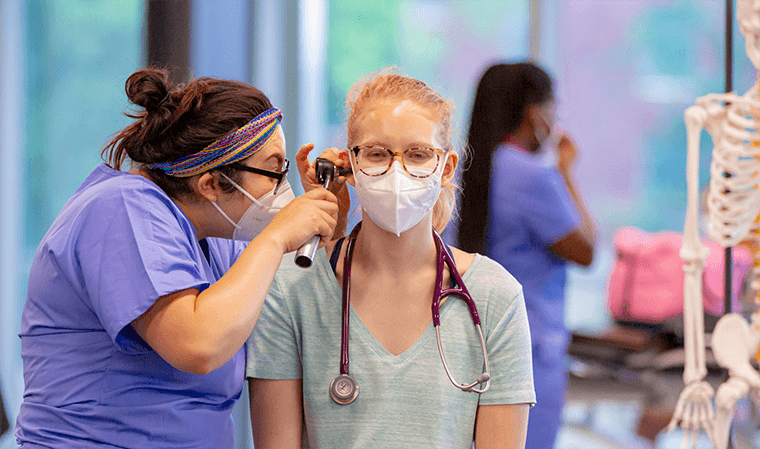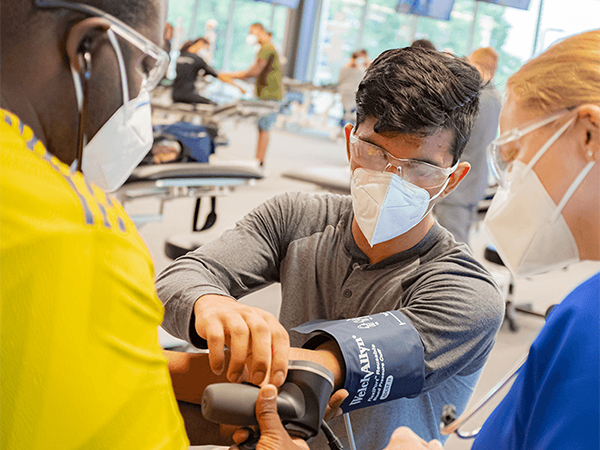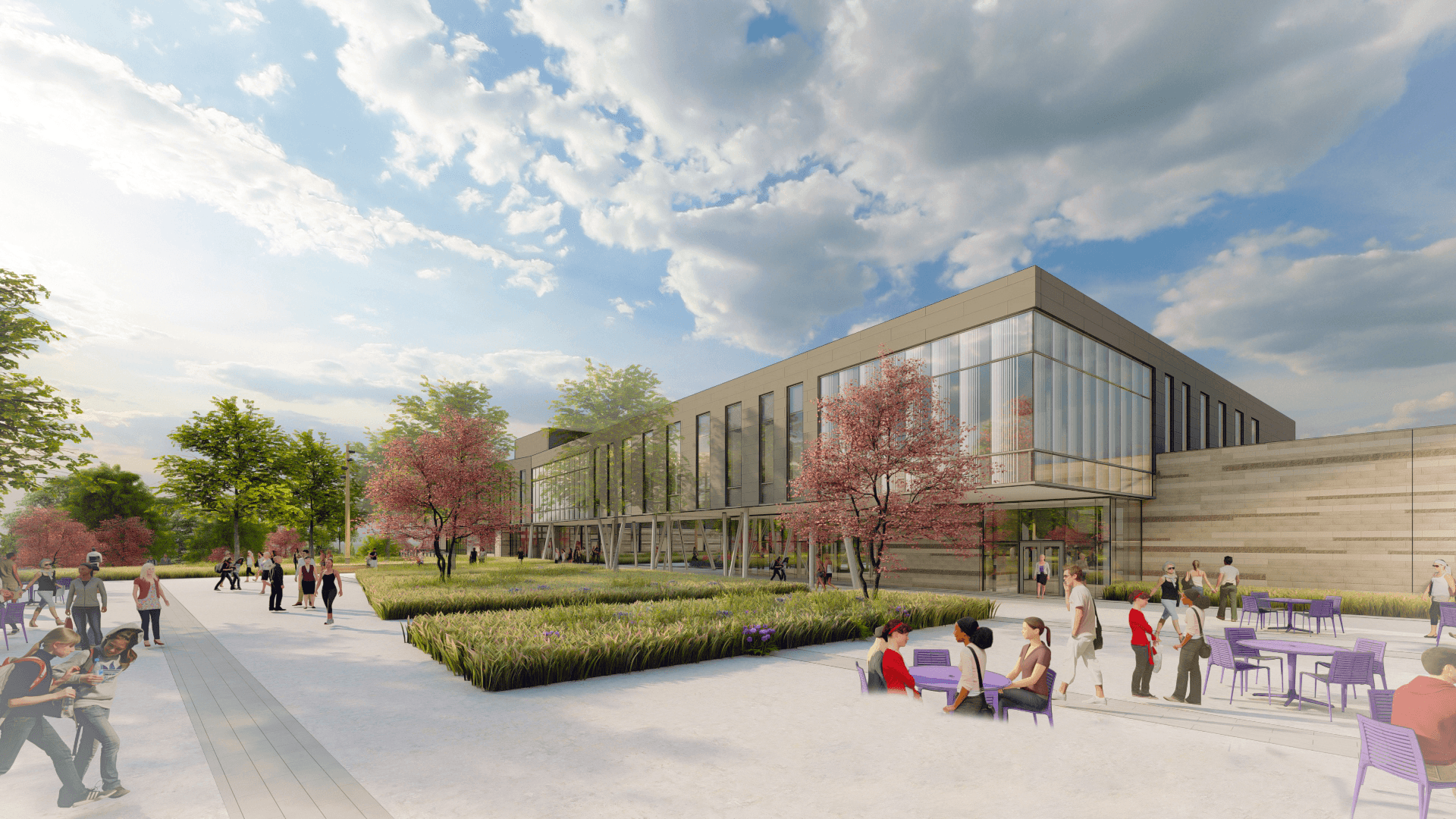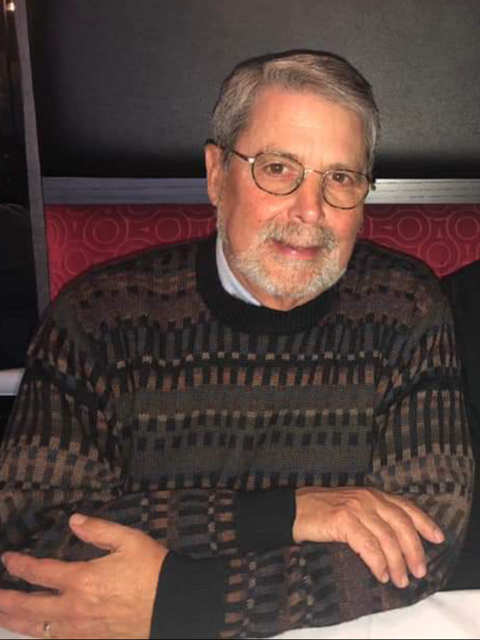Reviewed | Winter 2020-2021

A quarterly supplement of KCU Magazine from the Office of Philanthropy & Alumni Relations
Download the PDF copy of Reviewed | Winter 2020-2021.
Our world has faced a year of immeasurable challenges.
|
|
|
The change brought upon us by the events of 2020 is tremendous, as individuals and as a KCU campus community. As we look back on the moments that have led us to this point and consider the ways in which our outlook on the future will take shape, we are most reminded of the importance of community. Our university has endured because we have remained together – not in physical spaces but in our shared goals and commitment to one another – and we will continue onward together into that new future. As KCU responds to new challenges and opportunities at warp speed, we want to keep you more informed, more frequently. To that end, we have designed this, our first quarterly supplement to the annual KCU Magazine. Please consider Reviewed as your guide to the KCU stories we think you should know – today. We hope you enjoy these stories, updates and photographs and we invite you to join KCU as we begin a new year with continued dedication to our students and science and a promise to always protect one another. |
|
STUDENT-FOCUSED |
|
SCHOLARSHIP MATCH CHALLENGE – CHECK!Thanks to your generous support, KCU successfully met the Scholarship Match challenge made by Brad Vince, DO (COM ’98), and business executives Brad Bergman and Tom McDonnell through the Jack and Glenna Wylie Charitable Foundation! During the Scholarship Match Challenge, KCU was able to raise $1 million from 1,132 donors – 657 of whom directly designated their gift to the Scholarship Match Challenge fund. From these contributions and matching dollars, KCU has established five new scholarship funds that will soon be available to support students by providing larger and more impactful financial support than was previously possible. These new Impact Scholarship funds are: Wylie-Vince Impact Scholarship Thank you to all KCU donors for continuing to support future generations of KCU students. EMERGENCY HARDSHIP SUPPORT CONTINUESAs part of the COVID-19 Response Fund, KCU established a dedicated Student Hardship Fund to support students in need of economic assistance for which no financial aid is eligible. Awards up to $5,000 help cover needs such as: emergency travel; extra basic living expenses; replacement of stolen goods; and mental health medical bills not covered by insurance. In addition to the Student Hardship Fund, KCU continues to raise other forms of support through the COVID-19 Response Fund, including improving campus technology and providing additional technology access for KCU students, faculty and staff; and establishing a virology/microbiology professorship. |
|
NARROWING THE GAP |
|
MABEE FOUNDATION CHALLENGE GRANTWith the help of generous donors, KCU has raised more than $31 million toward a goal of $40 million. We are pleased to announce a challenge grant of $2 million from the JE and LE Mabee Foundation. This award is contingent on meeting the original goal of $40 million by October 2021. Read more about the College of Dental Medicine and the Mabee Foundation Challenge. |
|
DENTAL COLLEGE FOUNDING DEAN |
|
 |
"Dr. Niessen possesses a rare breadth and depth of oral health experience that bridges a number of critical disciplines, making her an outstanding choice for leading our new college of dental medicine."
KCU is honored to have Linda C. Niessen, DMD, MPH, MPP, a highly esteemed dental educator, consultant to industry and dedicated public health professional to lead the College of Dental Medicine as founding dean. Read Dr. Niessen's Bio and appointment announcement. |
"NEW YORK CITY IS A WAR ZONE!" |
|
 |
New York City is a war zone. I have the honor to serve on the front lines in two New York City hospitals as a fourth-year emergency medicine resident. Over the past five weeks, I have watched the city I love turn into a shell of itself. The crowded, bustling city is now composed of empty streets, deserted subways and closed storefronts of our beloved restaurant, bars and retails stores. The juxtaposition of the quiet city streets makes walking into the battlefield housed inside the emergency department truly jolting. The people I have worked side by side with over the past four years are nearly unrecognizable, each of them now hidden behind N95 and surgical masks, goggles, face shields, surgical caps, gowns and gloves. We consider ourselves lucky to have enough PPE, not all of our colleagues in the city do. As I walk in for my shift, I see tens of patients on ventilators, most of them there from the day before, and the day before that. Despite converting all of the operating rooms, step-down units, the pediatric ICU and several regular hospital floor units into Intensive Care Units for COVID-19 patients, it is not enough. The hospital is full. The emergency department is now balancing multiple patients on ventilators while caring for the constant influx of patients presenting with respiratory failure. Catching up with my favorite NYC paramedics, I hear about the hundreds of patients who aren’t lucky enough to make it to the hospital, instead dying before EMS can arrive. The situation is grim but, there is a light. I am constantly blown away by the camaraderie, dedication, selflessness and support of those I am privileged to work side-by-side with every day. This includes my fellow residents and attendings as well as those from various other services volunteering their time to work on the front lines. It includes the amazing nurses, who are not only medically caring for patients, but serving as a compassionate soul by the patient’s side, doing their best to fill in for the families who are restricted from visiting. This includes the paramedics, the real front-line heroes. And, of course the respiratory therapists, techs, transporters, environmental services, clerks and inventory specialists who truly keep the department moving. New York City is a war zone. But, we will win this battle. We are New York City Strong and that is something that cannot be beaten. |
PERSEVERING & PRESERVING |
|
 |
"I was asked a simple question — why I wanted to become a DO — and I didn’t have a good response,"" Dr. Ganapini says. "I wasn’t convincing. A period of soul searching ensued and the determined young man who wanted to make a difference in the quality of people’s lives beyond the science of medicine applied a second time to KCU. The year was 1973 and Dr. Ganapini found himself sitting in a chair across a desk from James DiRenna Sr., DO (COM ’38), who served the university in many capacities, including professor of surgery. "Countless aspiring physicians and students before and after me sat in that chair, listening to Dr. DiRenna talk why he became a DO and a general practitioner and surgeon," Dr. Ganapini says. "Chewing on his signature cigar, he asked: 'Why do you want to be a DO?'" Prepared this time with an authentic and heartfelt answer, Dr. Ganapini confidently replied. Dr. DiRenna congratulated him on his admittance to KCU. Education, insight and legacy A graduate of Rockhurst College (now Rockhurst University) in Kansas City, Dr. Ganapini, president of his graduating class, turned his attention to the rigors of medical school at KCU. One impactful mentor he encountered was Dr. H. Vard Nelson (COM '54), an anatomy professor who, as Dr. Ganapini recalls, "strode into the classroom without notes, but instead, carried a box of colored chalk and, as I discovered, a mission to inspire his students." Poised in front of a large, blank chalkboard like it was an artist's canvas, Dr. Ganapini describes how Dr. Nelson proceeded to painstakingly draw detailed anatomical structures as a way of teaching. "Every student, including me, tried to recreate what he put on that board, which was like having 'Gray's Anatomy' come to life. I kept a notebook dedicated to transferring Dr. Nelson's drawings to its pages." A prized possession that embodied a powerful classroom experience, the tattered notebook, along with an early edition of "Gray's Anatomy," was gifted by Dr. Ganapini to his son, Vincent, on the occasion of his admission to the Michigan State University College of Osteopathic Medicine in East Lansing. "I inscribed the volume of 'Gray's Anatomy' with a personal message on my pride in his accomplishment and how inspirational this part of my medical education proved," Dr. Ganapini says. Currently in a gastroenterology fellowship in a combined program at CarePoint Health in New Jersey and now age 34, Vincent often accompanied his father when he was on call, becoming fascinated with medicine. During his third year of medical school, at age 26, Vincent was diagnosed with leukemia. He took a year off from his studies, underwent chemo and more than 20 spinal taps. "We nearly lost him three times,"" Dr. Ganapini says, adding that his son is now in full remission. "His passion for medicine is remarkable. He is part of the new generation dedicated to high-quality, compassionate care and most recently, for 6 weeks while his GI fellowship was placed on voluntary hold, cared for COVID-19 patients in the greater New York City." Pursuing an enriching education to help patients live a life of wellness During his first year at KCU, Dr. Ganapini became aware of a combined BS-MD fast track program at University of Missouri-Kansas City and had an opportunity to transfer. Ultimately deciding to remain at KCU as a result of his complete satisfaction with the quality of the education he was receiving, he became an enthusiastic, full-fledged DO advocate and ambassador, embracing the whole-person approach to the treatment and care of individuals. Prior to medical school, Dr. Ganapini was a surgical cart boy and eventually a surgical technician at Saint Joseph Hospital in Kansas City, receiving hands-on experience that prompted an interest in surgery. After graduation and following his desire to be a surgeon, Dr. Ganapini did an internship at a renowned surgical hospital in Flint, Michigan — Flint Osteopathic Hospital. He returned to Kansas City where he was the first DO student to work at Wayne Miner Neighborhood Health, behind KCU. There he met Dr. Mike Wilkins who, after observing the newly minted medical school graduate, encouraged him to consider becoming an internist. During a family practice rotation during his internship at Flint Osteopathic Hospital, Dr. Ganapini met Dr. William Bernard, DO, a graduate of the Philadelphia College of Osteopathy and a physician who eventually became one of his partners for 37 years in family practice. "I loved his style and the caring and compassionate approach he had with patients and wanted to emulate that," Dr. Ganapini says, who chose family medicine as his specialty. Dr. Ganapini and Dr. Bernard recruited two other partners, DOs educated in Michigan and Chicago, to their large Flint practice, Preventive and Family Care Center, where they specialized in alternative and complementary medicine. Interns and residents frequently rotated through the practice, which Dr. Ganapini treasured. "Students keep you on your toes. You learn from them — they keep you challenged, current. And we were able to impart interpersonal skills, something you learn by example, not in the classroom." Affiliated with several hospitals in the area, Dr. Ganapini lists as a highlight of his career, in addition to the fulfillment of caring for generations of family members, receiving the "General Practitioner of the Year" two consecutive years in the mid-1980s from the Flint Osteopathic Hospital house staff. "Typically, the award is never given to the same physician twice, but the students voted me in the second time," he says. "That recognition meant a great deal." A responsibility to the next generation Testifying to his belief in the importance of osteopathic medicine, Dr. Ganapini and his wife, Diana, are part of KCU’s Heritage Society where they established planned giving to the university. "KCU is impressive," he says. "Everything from the facilities, recent expansions, the quality of the education and the lectures. We know they use our donations wisely and we are making a sound investment in a school that has provided me a memorable career, profession and quality of life." Stressing that the success and satisfaction of a physician's practice is defined by the sheer effort put into it, Dr. Ganapini reflects on a physician's educational foundation as the soul of a medical career. "I had the distinct privilege of being taught by the best of the best," he says. "It's an honor to participate in the future success of KCU students, much like I did my son's." |
FUTURE-PROOF
By early 2020, KCU’s work to redefine health sciences education was gaining speed with the construction of the new Center for Medical Education Innovation (CMEI). Ground-breaking technology and unparalleled access to education and instruction came together to create a new academic environment that could exist anywhere at any time - the CMEI would change everything. Then, there was a pandemic. And the CMEI did change everything.
How has the CMEI helped our students stay on track throughout a global pandemic? In a world now forever changed by COVID-19, what lies ahead for the center built to be future-proof? For answers to these questions, visit the CMEI page.
FUTURE-PROOF
By early 2020, KCU’s work to redefine health sciences education was gaining speed with the construction of the new Center for Medical Education Innovation (CMEI). Ground-breaking technology and unparalleled access to education and instruction came together to create a new academic environment that could exist anywhere at any time - the CMEI would change everything. Then, there was a pandemic. And the CMEI did change everything.
How has the CMEI helped our students stay on track throughout a global pandemic? In a world now forever changed by COVID-19, what lies ahead for the center built to be future-proof? For answers to these questions, visit the CMEI page.
WE ARE ONE UNIVERSITY
Since the launch of our campus climate study in 2018, KCU has committed to ongoing efforts to affirm that we are One University. We aspire to be a campus community in which all members feel accepted, all experiences and perspectives are respected, and all voices are equally valued. KCU is committed to advancing every student, faculty and staff member’s understanding of the complex issues facing marginalized groups. And as One University, KCU is dedicated to ensuring that our campuses are supportive, safe and vibrant communities for all. More about the university’s diversity, equity and inclusion efforts.
WE ARE ONE UNIVERSITY
Since the launch of our campus climate study in 2018, KCU has committed to ongoing efforts to affirm that we are One University. We aspire to be a campus community in which all members feel accepted, all experiences and perspectives are respected, and all voices are equally valued. KCU is committed to advancing every student, faculty and staff member’s understanding of the complex issues facing marginalized groups. And as One University, KCU is dedicated to ensuring that our campuses are supportive, safe and vibrant communities for all. More about the university’s diversity, equity and inclusion efforts.
